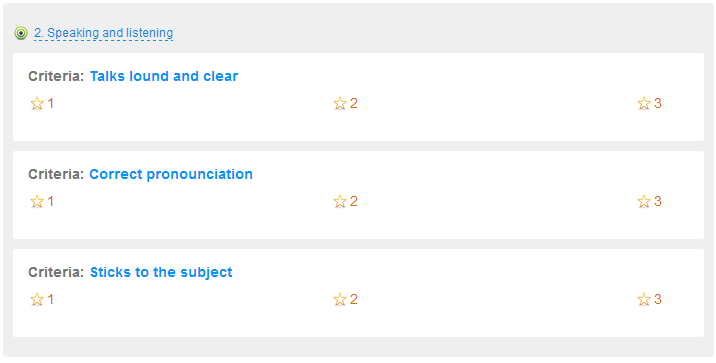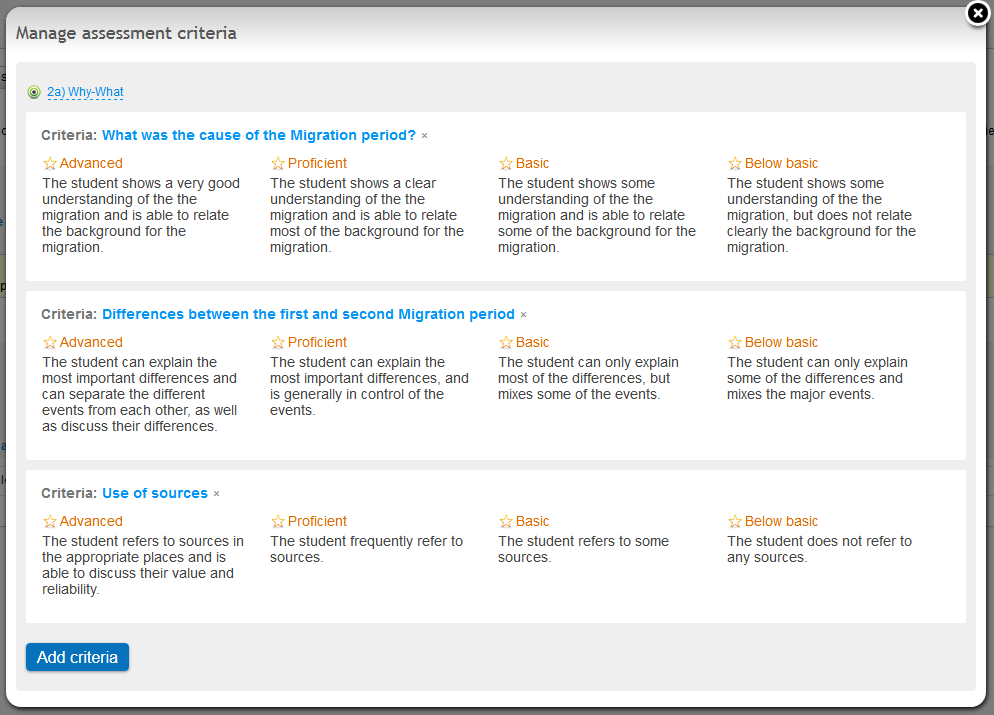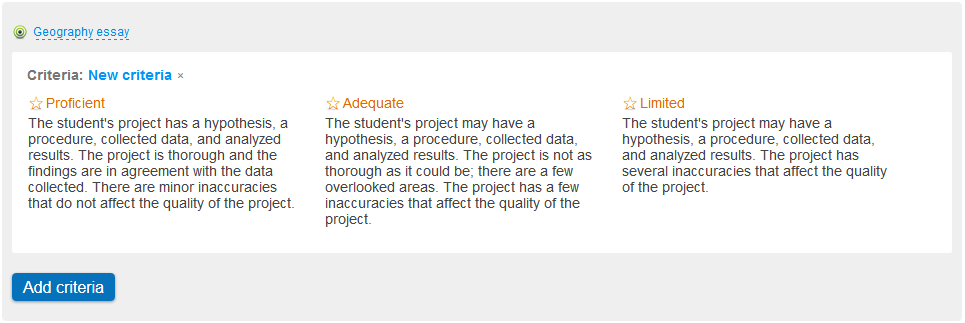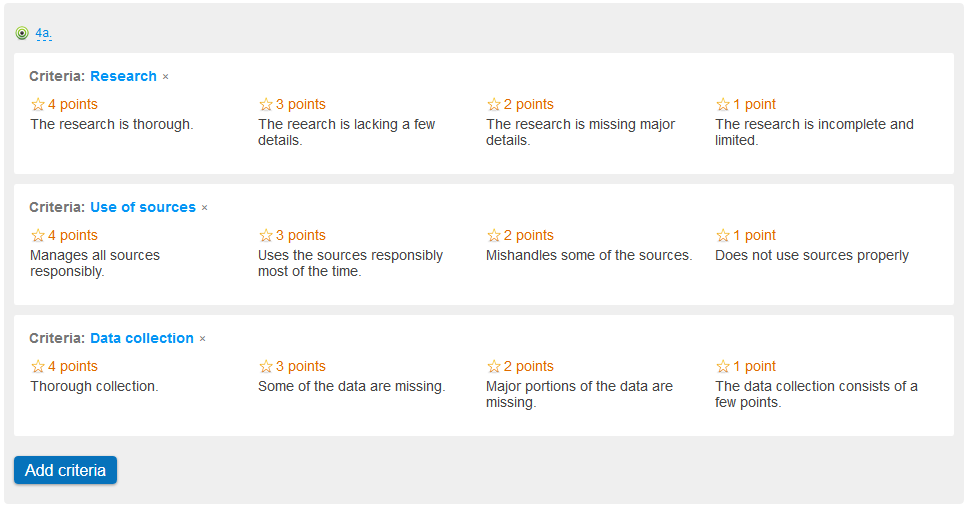The achievement levels are used in grading the various outcomes in relation to the learning objectives. The levels can be configured within each course. By default, there are four levels (Advanced, Proficient, Basic, and Below Basic), but you can choose anywhere from two to six levels and give each level a descriptive label of your own.
To set up achievement levels in a course:
- Click Settings.
- Click Learning objectives.
- Click Assessment settings in the top right corner.
You can choose to add more levels or keep the default levels. If you change anything, remember to save your changes.
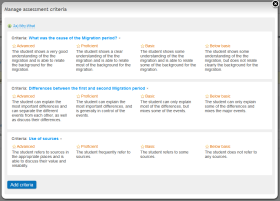 Criteria-based assessment involves using scoring guides – often referred to as rubrics – that are utilized to measure a student’s learning outcome. Enabling teachers to divide standardized learning objectives into smaller parts, the rubric, or scoring guide, is used to evaluate a student's learning on the basis of a range of criteria, not just a single numeric score. If the assessment rubric is presented to the students before they start working on assignments, they are aware of the criteria by which their work will be assessed and can reflect as they go.
Criteria-based assessment involves using scoring guides – often referred to as rubrics – that are utilized to measure a student’s learning outcome. Enabling teachers to divide standardized learning objectives into smaller parts, the rubric, or scoring guide, is used to evaluate a student's learning on the basis of a range of criteria, not just a single numeric score. If the assessment rubric is presented to the students before they start working on assignments, they are aware of the criteria by which their work will be assessed and can reflect as they go. General rubrics
General rubrics